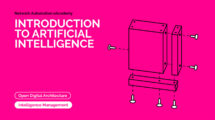One of the most consistent themes across human civilisation has been our need and ability to tell the time with increasing accuracy. Knowing the time has been crucial in our ability to organise into communities and even navigate the world. From Harrison’s timepieces in the 18th century that helped sailors navigate the globe to today’s GPS in our phones that help us find a coffee shop, time is what helps us know where we are and what is happening around us.
Today, Time and Frequency (T&F) services are critical to many civil and industrial sectors, both directly and indirectly, including telecommunications, geo-positioning (including autonomous vehicles), energy, finance, and advanced scientific use cases. Access to precise time and frequency signals is, therefore, of major interest to industry, research, and the economy worldwide. For example, distributed radio telescopes and gravitational wave sensors need to be able to cross-reference their data and for this accurate timing is essential.
In the past few years, National Metrology Institutes (NMIs) have successfully developed and tested new T&F techniques using optical fibres which have shown a stability performance of at least three orders of magnitude better than the current best commercial services. Moreover, such techniques offer an alternative to Global Navigation Satellite System (GNSS) for end-users who cannot rely on broadcast signals due to, for example, security concerns such as GPS spoofing attacks or reception issues if they are located in an underground laboratory. Further, new T&F services have the potential to respond effectively to the challenges of tomorrow.
These new services generated by NMIs and based on optical fibre transfer (often referred to as metrological T&F services) have emerged in response to a worldwide challenge driven mainly by research institutes that wanted to improve their physical experiments using metrological signals. Early projects and proof of concept deployments were nationally funded, and succeeded in implementing the first optical links, with each country experimenting with its own design but, so far, there is no common standardisation throughout Europe, and as a result many different deployment techniques remain in use.
It is also important to consider how metrological services can co-exist in standard telecommunication networks, one challenge being whether it is possible to run T&F and data services over the same fibres. Such approaches can potentially be invaluable to allow distant end-users to be more readily connected to the NMI (or institution) generating the service.
Close collaborations of NRENs have succeeded in the development of national and international testbeds and pilot services. Progress towards building an ecosystem, business modelling, regulation, standardisation and exploitation has been studied in projects such as CLONETS-DS in which GÉANT is both a coordinator and contributor.
In order to help coordinate the work that many GÉANT Community members are contributing, the GÉANT project is working on catalysing the emergence of metrological networks in Europe, and to document their experiences on the range of techniques and technologies in use.
To find out more about this work visit https://www.clonets.eu/clonets-project.html

Read or download the full magazine here







